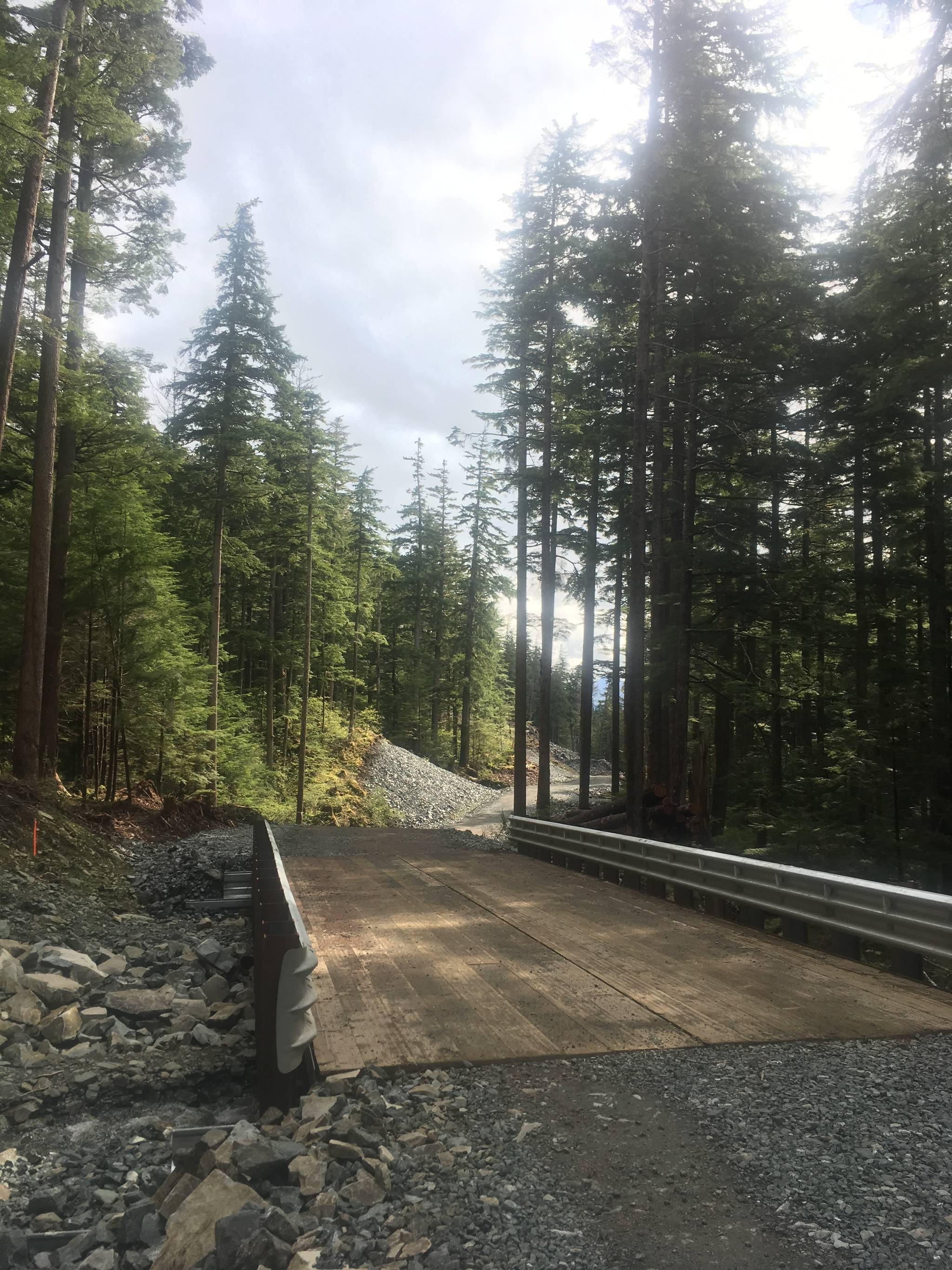The west side of Douglas Island has been talked about for many years as an enticing place where Alaska’s capital city can expand and find more space to accommodate residents. The problem is access, so often the case in the vast expanses of the Last Frontier. Anyone who has hiked around the north end of the island to the other side, or viewed it from the air or water, knows its frequently clear skies and amazing views across Stephens Passage to Admiralty Island.
In 1997 the City and Borough of Juneau (CBJ) adopted a plan for access to Douglas Island, and set in motion a project that is moving steadily toward fruition. The original plan called for a road circumnavigating the island as far south on the west side as the town of Douglas sits on Gastineau Channel. This would open a tremendous amount of land.
While connection to the North American road system through the Lynn Canal Highway project remains unfortunately stalled, on Douglas Island a new road is being built that Juneau residents can celebrate.
A road to the west side of their island will benefit all who live and spend time in the capital city. In 2012, CBJ committed resources and attention to enhancing access to West Douglas, which meant deferring focus and planning on a north crossing from the island to the mainland. Both are important and inevitable projects, but the relative cost and technical complexity of the road made it more viable than a new bridge in the short term. Increased demand for access to Douglas Island from the mainland will ultimately bring focus back to the need to build the north crossing.
Personally walking and enjoying the West Douglas Pioneer Road is a delightful experience. Just under 2 ½ miles in length, the route mounts the foothills of the North Douglas mountains, a lovely path to an important part of Juneau’s future. Roads are an archetypical point of reference in human minds, and are important to the way we perceive our place in the world. As Buddha said, “There are only two mistakes one can make along the road to truth; not going all the way, and not starting.”
Even better than the Pioneer Road as it currently exists, is that the careful expenditure of the $3 million allocated for the project has resulted in a project that is on time and under budget. That has led CBJ to seek to invest the unexpended funds in the project’s budget accounts on a further one-mile extension. Because the next stretch of the road is on the downhill side on the other side of the crest, it is relatively easy terrain where money will go farther in extending the Pioneer Road in a timely manner.
Walking the West Douglas Pioneer Road is peaceful and calming. Careful work has been done to preserve the integrity of the natural environment. There appear to be 52 culverts along the whole pathway, with 20 before the bridge, and 32 after, on the way to the west side of the island. There is a quarry from which it appears there is ample aggregate available for the project, close to the point at which the Pioneer Road takes off from North Douglas Highway. There are many pull-outs along the course of the road, and at one point a bench has been carved from a large tree stump on the side of the thoroughfare.
CBJ is reviewing the Pioneer Road extension by an additional mile and public testimony will be heard on Tuesday, Sept. 12. This project makes such tremendous sense, one can expect a chorus of support. The road in its current form is dedicated only to non-motorized uses, and this is an excellent way in which for it to be enjoyed pending full construction. The Pioneer Road will be ideal for Nordic skiing in the winter. The extended road will end at Middle Creek, a fine place to pause while awaiting refinement of future plans.
One must appreciate new methods to access the natural world around us in Juneau, and the West Douglas Pioneer Road is as good an example of these as the capital city could have.
• Ben Brown is a lifelong Alaskan and Juneau resident, and serves as chairman for the Alaska State Council on the Arts.

